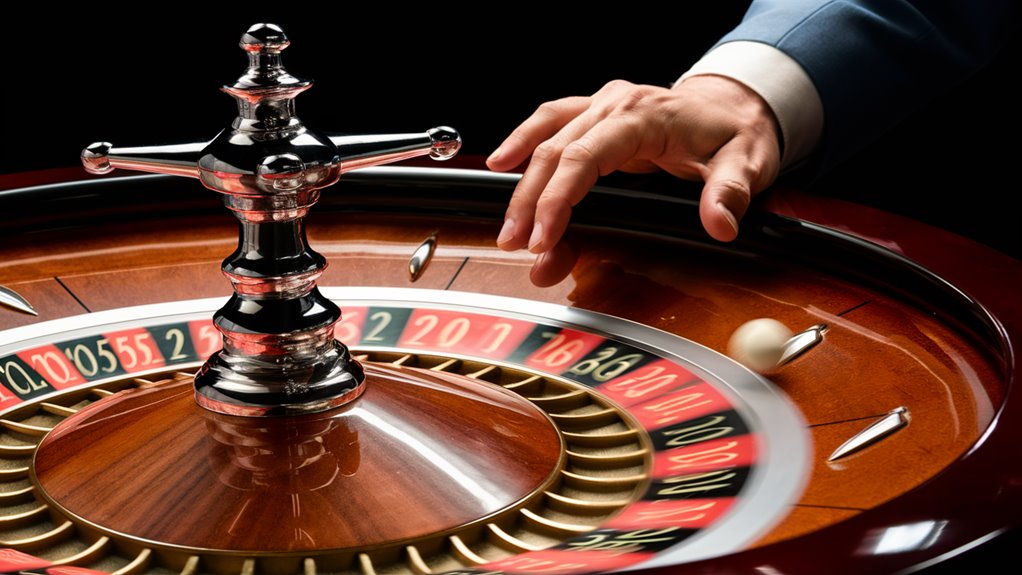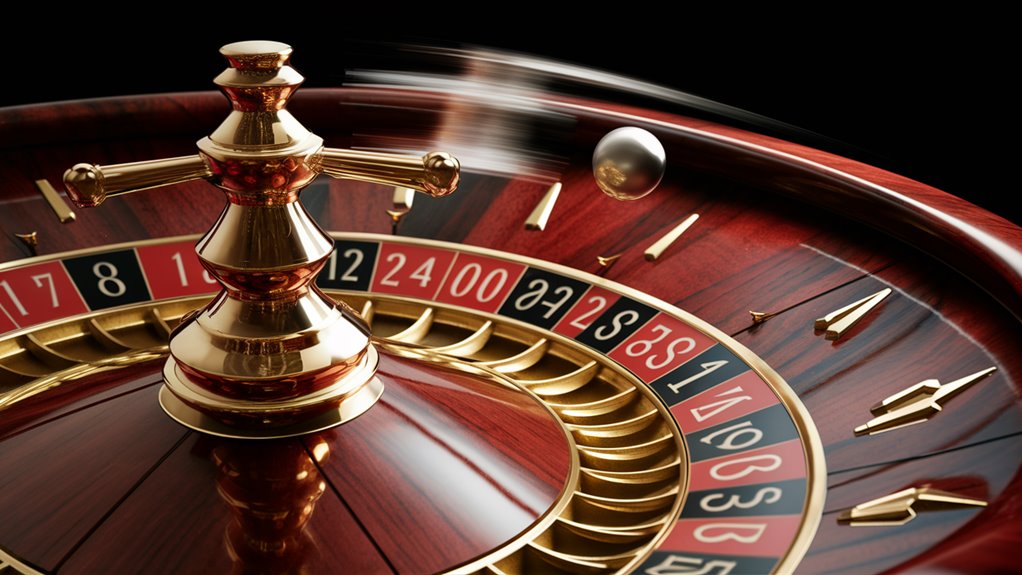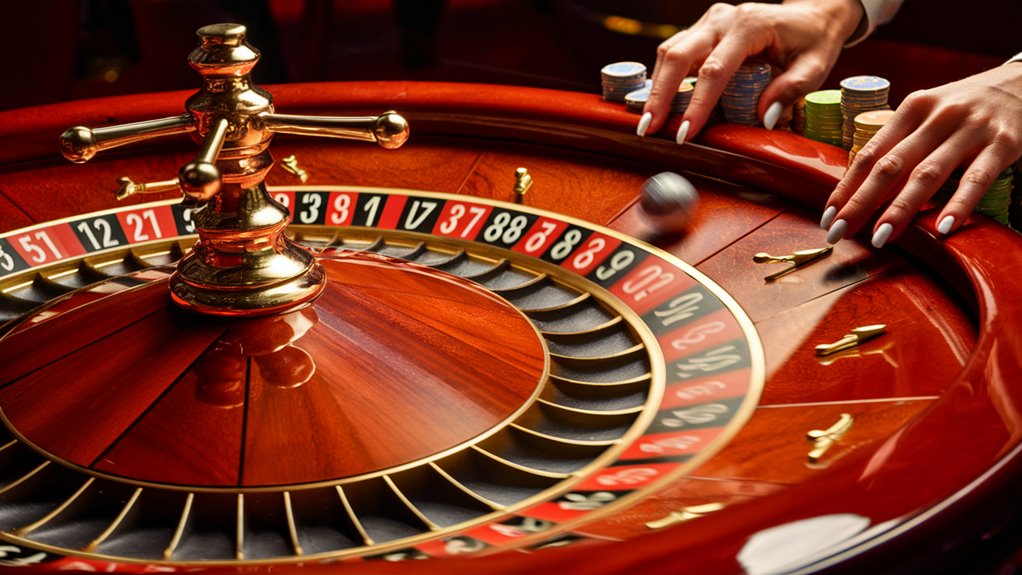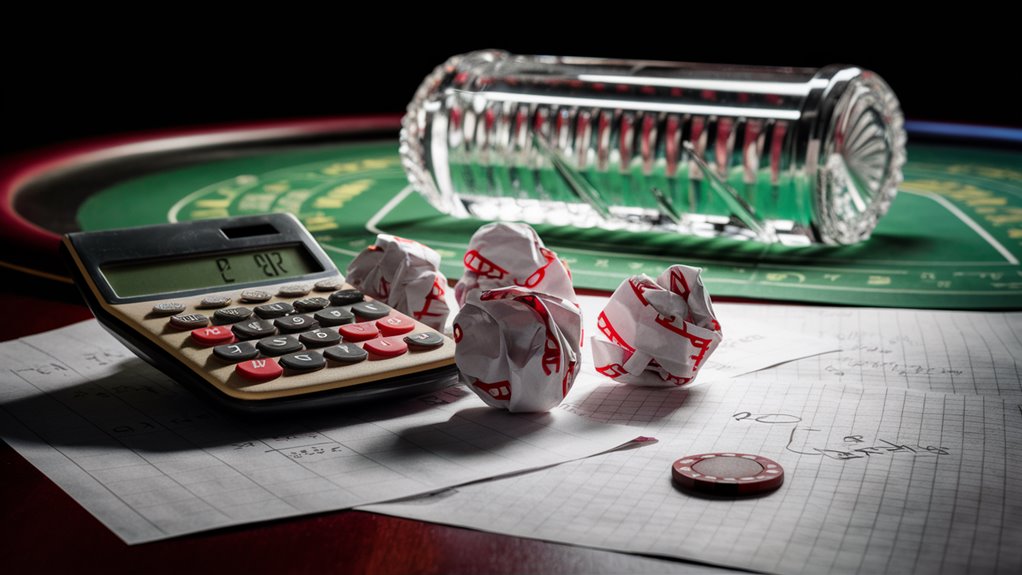The Simple Truth about Roulette: How it Works and Why

How Today’s Roulette Wheels Work
Today’s roulette wheels are true works of careful making, made to meet very narrow set rules. These well-built game tools maintain very close 0.1mm fret gaps and a tiny 0.3º tilt range, ensuring fairness through exact design. 이 사이트에서 자세히 보기
Math Rules and How the Ball Moves
The rules of motion in roulette are steady, with the ball slowing down by 0.5 m/s². This makes the ball’s path predictable, but the final spot is still random within set rules. The house edge is always set at 2.7% for European tables and 5.26% for American tables.
How Dealers Work and Game Patterns
Skilled dealers spin the wheel with 82-89% consistency. However, this constancy doesn’t change the core random nature intended in the game’s design. These patterns help the game remain reliable yet still full of chance.
Watching Closely and Keeping Things Fair
Big casinos use top-notch RFID tags and stats software to ensure game integrity. They use:
- Chi-square checks
- Curve analysis
- Instant pattern study
This comprehensive observation setup maintains fairness while preserving the chance of each spin.
How Roulette Chances Work
All About Roulette Chances: A Full Run-Through
Basic Roulette Chances
The core concept of roulette chance begins with the total potential outcomes on the wheel.
In European roulette, with 37 slots (0-36), the chance of landing on any one number is 1/37 (2.7%).
American roulette adds an extra 00 slot, making the probability 1/38 (2.6%).
The House Edge
The house edge is a key mathematical component in roulette play.
European roulette maintains a 2.7% house edge, while American roulette has a larger 5.26% edge on even bets.
This means you can expect to lose $2.70 and $5.26 out of every $100 bet over the long term.
More Chances When Betting
Betting on Columns and Sets of Twelve
Column bets and bets on sets of twelve have a 32.4% chance (12/37) on European tables.
These outside bets offer more opportunities to win but pay less than inside ones.
Two-Number and Four-Number Bets
Bets on two numbers adjacent to each other provide a 5.4% win chance.
Bets on four corners increase this to 10.8%.
Each spin stands alone, and past outcomes do not alter future ones.
Using Math to Understand Each Spin
The principle of independent events ensures that roulette chances remain constant regardless of past spins.
This crucial aspect of probability theory underpins all roulette betting strategies and predictions.
The Workings Inside the Wheel
How Roulette Wheels Really Work

Main Parts and Build
The creation of random outcomes in roulette relies on well-crafted components working in harmony.
The main elements include the spinning wheel section, stationary bowl, ball track, and specially designed frets. These precisely engineered components enable the complex interactions required for truly random outcomes in casino games.
Key Bits That Affect the Game
Numerous physical forces influence how the wheel functions, including:
- Initial speed of the ball
- Spin force of the wheel
- Airflow resistance
- Surface texture
The ball follows a predictable trajectory until it collides with the frets and enters a state of controlled chaos.
Typically, the ball decelerates by approximately 0.5 m/s², though this can vary depending on wheel maintenance and surrounding air conditions.
Top-Level Making and Checks
Minute variations greatly impact wheel performance:
- Wheel tilt requirements of 0.3 degrees
- Precision fret gaps within ±0.1mm
- Wear on the ball track
Leading casinos adhere to strict maintenance protocols to ensure random results:
- Wheel inspections within ±0.005 inches
- Maintaining balance to 0.07 degrees
- Regular part evaluation and repair
These manufacturing standards and care protocols maintain the game’s numbers for fair play.
How to Spot Dealer Patterns
How to Tell What Dealers Do in Roulette
Dealer Signature Science
Professional roulette dealers develop consistent physical techniques in ball release, spin speed, and timing – known as their dealer signature.
Statistics reveal that dealers maintain spin speeds within a 7% variation and timing within 0.3 seconds across numerous spins.
Measuring Dealer Moves
Main Things to Watch
- Ball release point (measured in wheel sections)
- Initial ball speed
- Wheel spin rate
- Time between spins
Data on these factors over 300+ recorded spins per dealer show distinct patterns that persist across multiple game sessions.
What You Can See and What Stays the Same
What is Seen Often
- Consistent release height (variation under 1.2cm)
- Ball path grouping within 45-degree sections Best Betting Strategy for Your Gambling Goals
- Spin force showing only 4-8% deceleration variation
How True The Patterns Are
Experienced dealers exhibit 82-89% consistent movements, creating distinct physical routines within the roulette setup.
These recognizable patterns emerge through muscle memory developed over numerous repetitions.
Exact Measures
- Variations in ball speed
- Preferred wheel sections
- Timing patterns
- Ball deceleration
With methodical observation and data collection, these consistent elements form dealer-specific signatures that reflect each individual’s unique style.




